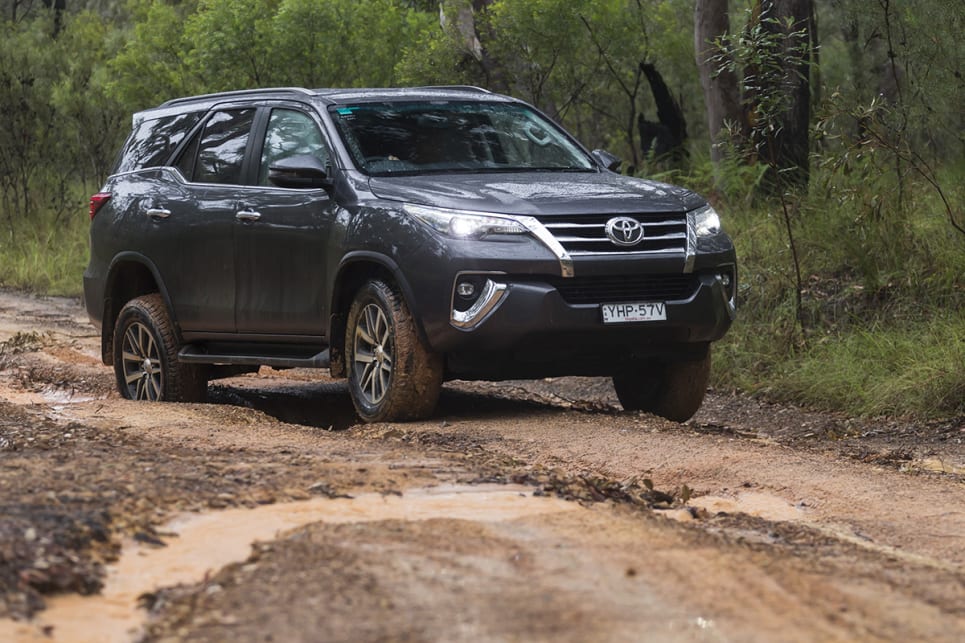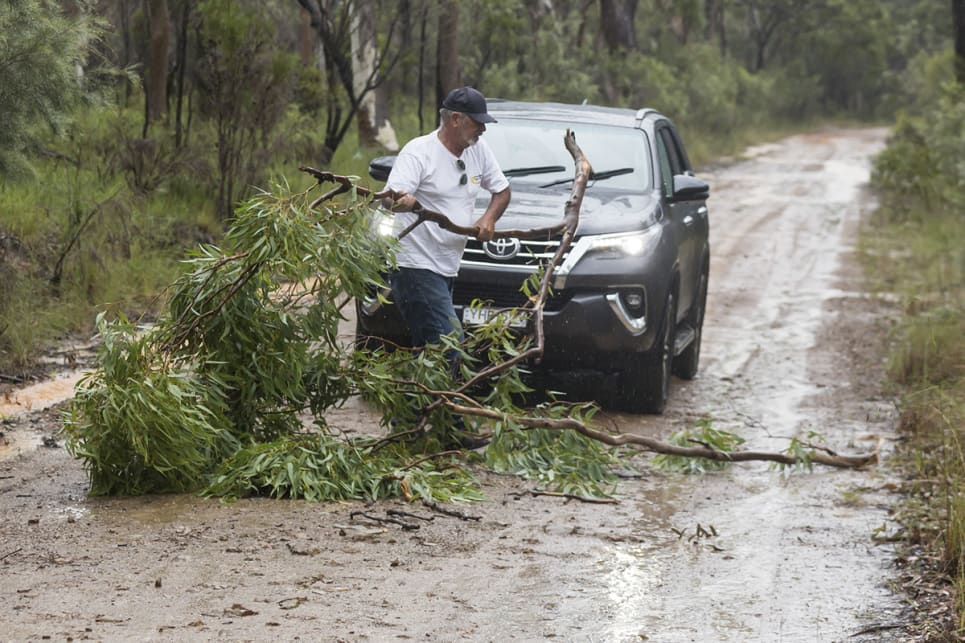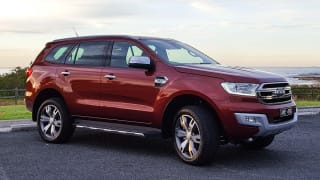Any Toyota with a two-speed transfer case has proven to be a decent vehicle for bush and beach, capable of dealing with all manner of off-road obstacles.
So the Fortuner starts out with a fair four-wheel drive heritage and with the HiLux ute ladder chassis (albeit with coils replacing leaf springs down back) and HiLux running gear it has the credentials, and the promise of durability, to get off the beaten track and back. And that’s certainly the case here – good gearing, good loads of torque delivered early plus 225mm of ground clearance are excellent starting points. The Fortuner also has a decent approach angle of 30 degrees, departure angle of 25 degrees and ramp-over of 23.5 degrees. Wading depth is 700mm.
-
 Despite the road-biased Dunlop Grandtreks on the Fortuner Crusade it never faltered.
Despite the road-biased Dunlop Grandtreks on the Fortuner Crusade it never faltered.
-
 From soft, deepish sand to rock crawling and greasy mud splashing, the electronic traction and stability aids came in handy at times.
From soft, deepish sand to rock crawling and greasy mud splashing, the electronic traction and stability aids came in handy at times.
-
 There’s an 80-litre fuel tank so the showroom-standard vehicle is pretty much set for wide open spaces from the get-go.
There’s an 80-litre fuel tank so the showroom-standard vehicle is pretty much set for wide open spaces from the get-go.
So no question about its rough road ability. Despite the road-biased Dunlop Grandtreks on the Fortuner Crusade it never faltered in a bush and beach outing and conditions from soft, deepish sand to rock crawling and greasy mud splashing; electronic traction and stability aids come in handy at times.
Out on the bitumen the Toyota sat at an easy 110km/h down the highway, untroubled by sub-tropical storms and interstate travellers. On back country roads care is needed to curb a driver’s enthusiasm, the front end can run wide and there can be body roll if the Fortuner is pushed around, quite understandable for a tall machine on a ladder frame chassis.
Ride quality’s good, it will tow 2800kg and there’s an 80-litre fuel tank so the showroom-standard vehicle is pretty much set for wide open spaces from the get-go; maybe add a snorkel to be extra sure of clean air out west and dry engines through the creeks.
































